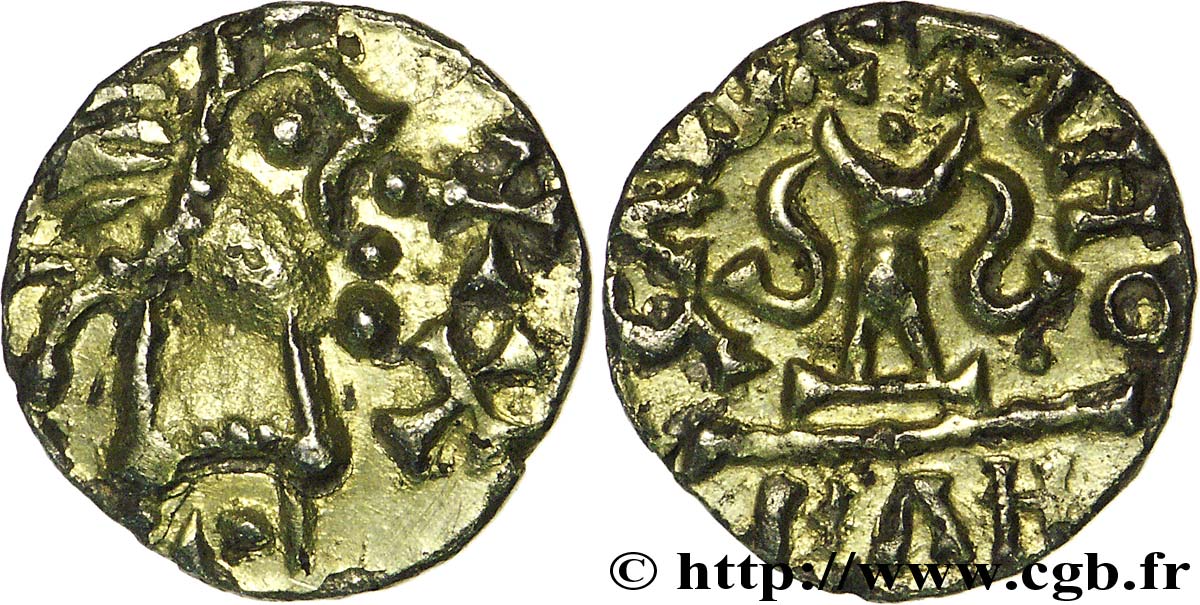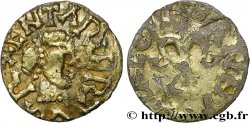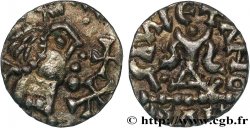v32_0982 - MEROVINGIAN COINAGE - BANASSAC (BANNACIACO) - Lozere Triens de bas titre, avec deux croix et sans globule
MONNAIES 32 (2007)
Starting price : 750.00 €
Estimate : 1 200.00 €
Realised price : 950.00 €
Number of bids : 5
Maximum bid : 1 320.00 €
Starting price : 750.00 €
Estimate : 1 200.00 €
Realised price : 950.00 €
Number of bids : 5
Maximum bid : 1 320.00 €
Type : Triens de bas titre, avec deux croix et sans globule
Date: (VIIe siècle)
Mint name / Town : Banassac
Metal : gold
Diameter : 12,4 mm
Orientation dies : 9 h.
Weight : 0,82 g.
Rarity : R3
Coments on the condition:
Joli triens relativement complet, avec la légende bien lisible. Frappe vigoureuse au droit comme au revers, mais sur un flan de mauvais aloi qui nuit à l’aspect général de la monnaie
Catalogue references :
Obverse
Obverse legend : ANÉPIGRAPHE.
Obverse description : Tête barbare diadémée, à droite ; diadème perlé ; deux croisettes devant le visage.
Reverse
Reverse legend : GAVALETANO // BAH.
Reverse description : Calice à deux anses, posé sur une ligne d’exergue perlée.
Commentary
Les triens de ce type sont attribués à SIGEBERT et sont relativement abondants ce qui a permis d'en réaliser une étude précise, avec des différenciations parfois subjectives ! Sur cet exemplaire, appartenant vraisemblablement à la série M, "Avec deux croix et sans globule", la légende du revers est entièrement lisible bien qu'en bord de flan.
Au revers, on observe un globule sous l'anse du calice, à droite. Exemplaire de poids faible, de mauvais aloi.
Au revers, on observe un globule sous l'anse du calice, à droite. Exemplaire de poids faible, de mauvais aloi.








 Report a mistake
Report a mistake Print the page
Print the page Share my selection
Share my selection Ask a question
Ask a question Consign / sell
Consign / sell
 Full data
Full data